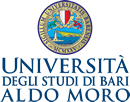SEMIOCHEMICAL ACTIVITY OF PHEROMONES AND ANALOGUES OF THREE MATSUCOCCUS SPECIES (HEMIPTERA: COCCOIDEA: MATSUCOCCIDAE)
DOI:
https://doi.org/10.15162/0425-1016/863Abstract
SEMIOCHEMICAL ACTIVITY OF PHEROMONES AND ANALOGUES OF THREE MATSUCOCCUS SPECIES (HEMIPTERA: COCCOIDEA: MATSUCOCCIDAE).
The sex pheromone of the Israeli pine bast scale, Matsucoccus josephi Bodenheimer & Harpaz (Homoptera: Matsucoccidae), was identified as the ketone (2E,5R,6E,8E)-5,7-dimethyl-2,6,8- decatrien-4-one. The chiral diene chain is common also to the sex pheromones of M. matsumurae Bean & Godwin and M. feytaudi Ducasse. The species-specificity of the three pheromones is due to the differences in the second side chain of these ketones. Field and GC- EAD studies indicated that the sex pheromones of each of the three Matsucoccus spp. is a potent kairomone of both males and females of the predator Elatophilus hebraicus Pericart (Hemiptera: Anthocoridae). The response of E. hebraicus to the sex pheromones of M. matsumurae and M. feytaudi is particularly interesting since it does not occur in the distribution area of these two congeneric spp. These results prompted us to prepare a series of analogues with variations in the two side chains in order to probe the structure-activity relationship of the pheromonal/kairomonal attractancy of M. josephi and E. hebraicus. Field results indicate that alterations in the common diene moiety affected the kairomonal activity, while structural changes in the second side chain markedly reduced the pheromonal activity.
Key words: stereoisomer.







